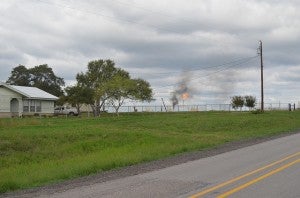Dope Deal: Wall Street Journal Falls for Methane “Facts” Cooked by Industry
 When credibility is your stock in trade, it’s important to have your facts straight. On Monday, the Wall Street Journal blew it.
When credibility is your stock in trade, it’s important to have your facts straight. On Monday, the Wall Street Journal blew it.
In an unsigned opinion piece dubbed “Meth Heads in the White House,” the paper dismisses plans expected to be announced by the Obama administration in the next few weeks that would start to tackle the huge amount of methane leaking from America’s oil & gas production facilities.
The question is a significant one, because – as the article notes in passing – methane is an extremely potent greenhouse gas (in point of fact, packing more than 80 times the warming power of carbon dioxide over a 20 year time frame). According to EPA data, oil & gas operations emit roughly 8 million metric tons of unburned methane annually, enough gas to heat nearly 6 million homes.
While acknowledging the problem, the Journal argues that companies are solving it just fine on their own, citing figures which closely track industry talking points suggesting that emissions are already dropping. Unfortunately, the numbers in question are a blend of half-baked, fully cooked and – in one key instance – flat out wrong.
In their most glaring error, Journal editors cite a University of Texas Study published last month (and partly funded by EDF) to claim that oil & gas industry methane emissions have fallen 10 percent between 2013 and 2014 alone. In fact, as study author David Allen has pointed out, the results, which actually come from two different UT studies, fall squarely within the margin of error and hence show no such change in emission rates.
In other words: No, the UT study does not say what the Journal editors say it says. The paper owes its readers a correction.
As to the idea that methane emissions from oil and gas operations have fallen steadily over time, this too is simply false. In reality, oil & gas industry methane emissions as estimated by the EPA stayed relatively flat between 1990 and 2008, and didn’t begin to decline noticeably until 2009. While part of that was the result of smarter practices by select operators, the bigger driver of the reported decline has been 2012 EPA rules limiting natural gas emissions from an important part of the drilling process known as “well completions.”
We’d say those gains are proof-positive that sound regulation gets results.
Reported declines after 2009 also completely ignore oil well emissions, which account for a substantial share of sector’s total methane footprint. (Part of the reduction also stems from changes in how EPA does its math.)
Even those numbers don’t paint the whole picture.
Although EPA Greenhouse Gas Reporting Program data shows the industry’s total methane emissions fell 12 percent between 2011 and 2013, emissions from key activities not currently covered by federal standards went up substantially.
According to the very same UT study cited affectionately by the Journal, average emissions from thousands of pneumatic controllers used to operate valves throughout the supply chain are 17 percent higher than EPA estimates, due to a mixture of both unintended malfunctions and deliberately leaky design. Moreover, UT researchers say real-world emissions from these devices may be twice as high as EPA figures due to systematic undercounting by the agency.
Two other recent national studies not mentioned in the article – but available here and here – suggest EPA’s overall estimates of methane emissions from the oil & gas industry are too low by half, based on actual methane emissions measured by scientists.
The good news, firmly underscored by the UT study, is that a relatively small share of wells and equipment are responsible for a disproportionate piece of the emissions pie. The trick is finding which ones are performing badly, and when. And that is precisely why we need tougher rules and regulations. Once we know where the problems are, it is a relatively simple, cost-effective matter to start plugging the leaks.
Could industry police itself, as the Journal suggests? The evidence suggests otherwise. The biggest voluntary program for reducing industry methane emissions, EPA’s Natural Gas Star, has been around since 1993, but of the more than 6,000 producers in operation, fewer than 30 are participants.
Fortunately, the economics favor action. Cutting current methane emissions in half by requiring leak detection and repair and other sensible measures, would save the oil & gas industry nearly $1 billion a year in wasted product and cut the 20-year climate pollution equivalent of 90 coal-fired power plants.
Penciling out the math even farther, a study by ICF recently estimated that companies could cut methane emissions by 40 percent or more for about one quarter of one percent of the price of the gas they’re selling. That means $4.00 worth of gas would cost $4.01 – an affordable bargain even at a time of falling prices.
In short, the Wall Street Journal has the facts backward. When you get the numbers straight, it’s easy to see how the methane problem is also a huge, low-cost opportunity to help address the climate challenge, and to recognize that sensible regulation can set a level playing field for all oil and gas operators, not just the few who choose to do the right thing.
Photo source: flickr.com/photos/earthworks











